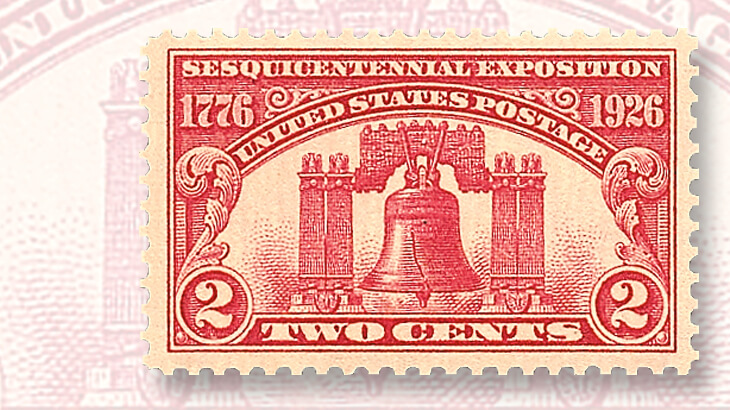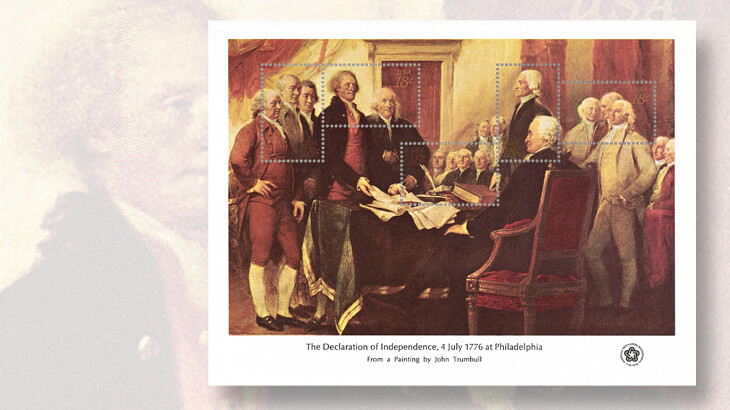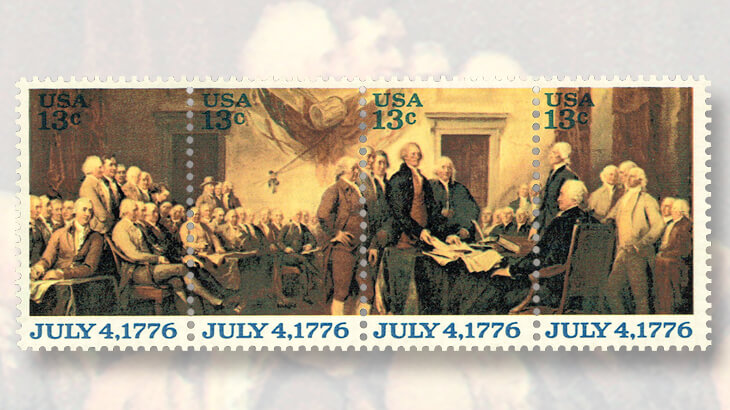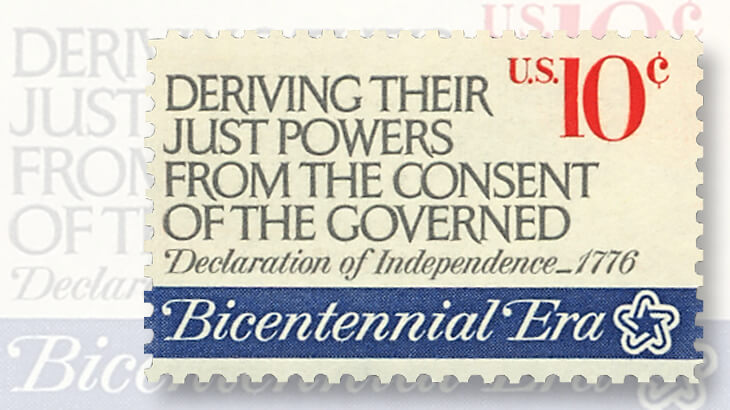US Stamps
A philatelic birthday tribute to the Declaration of Independence
By Charles Snee
The upcoming issue of Linn’s Stamp News is dated July 4, 2016, which also happens to be the 240th anniversary of the adoption of the Declaration of Independence.
The first United States stamp to make reference to this historic event was issued in 1869, as part of the series of definitive (regular-issue) stamps collectors commonly call the Pictorials.
Specifically, John Trumbull’s 1818 painting showing the June 28, 1776, presentation of the draft of the Declaration of Independence to the Second Continental Congress is shown in the vignette (central image) of the 24¢ Pictorial (Scott 120).
Connect with Linn’s Stamp News:
Sign up for our newsletter
Like us on Facebook
Follow us on Twitter
The actual painting, which was installed in the rotunda of the U.S. Capitol in 1826, measures 18 feet by 12 feet.
The Architect of the Capitol website provides a capsule summary of the central action in the painting:
“In the central group in the painting, Thomas Jefferson, the principal author of the Declaration, is shown placing the document before John Hancock, president of the Congress. With him stand the other members of the committee that created the draft: John Adams, Roger Sherman, Robert Livingston and Benjamin Franklin. This event occurred in the Pennsylvania State House, now Independence Hall, in Philadelphia.”
A somewhat more subtle philatelic tribute to the Declaration of Independence was issued May 20, 1926.
The 2¢ Liberty Bell stamp (Scott 627) celebrated the Sesquicentennial Exposition held June 1–Dec. 1, 1926, in Philadelphia, as well as the 150th anniversary of the Declaration.
In 1974, the U.S. Postal Service issued four stamps in anticipation of the bicentennial that would take place in 1976 (Scott 1543-1546).
One of the 10¢ American Revolution Bicentennial stamps (Scott 1545) features a seminal quote from the Declaration: “… deriving their just powers from the consent of the governed …”
In essence, this statement means that the people are in charge of the government, not the other way around, and that the people can change the government if they are not satisfied with its performance.
In 1976, Trumbull’s Declaration of Independence painting appeared on two different stamp issues.
One of the four American Bicentennial souvenir sheets issued May 29 depicts the central scene in the painting (Scott 1687).
The five 18¢ stamps within the sheet are arranged to show the heads of Thomas Jefferson and other prominent individuals in the scene.
The entire painting is illustrated across four 13¢ stamps issued July 4, 1976, in a se-tenant strip (Scott 1694a). These stamps are a handsome tribute to the nation’s bicentennial.
Looking over these stamps brings back an early stamp-hobby memory for me.
I was almost 10 at the time the American Bicentennial souvenir sheets were issued. As a new, wide-eyed collector, I was thrilled when I received a set of the sheets on my birthday.
And, yes, I still have the sheets — treasured mementos of my boyhood collection.
Happy 240th birthday to the Declaration of Independence and the United States of America.
More Independence Day stories in Linn's:
July 4, more than Independence Day in the history of the United States
I love a parade: forming an Independence Day stamp collection
MORE RELATED ARTICLES
Headlines
-
US Stamps
Oct 9, 2024, 3 PMProspectus available for Pipex 2025
-
US Stamps
Oct 9, 2024, 2 PMGratitude for Denise McCarty’s 43-year career with Linn’s
-
US Stamps
Oct 9, 2024, 12 PMWorld’s first butterfly topical stamp in strong demand
-
World Stamps
Oct 8, 2024, 3 PMRoyal Mail’s Oct. 1 definitive meets new international standard rate










